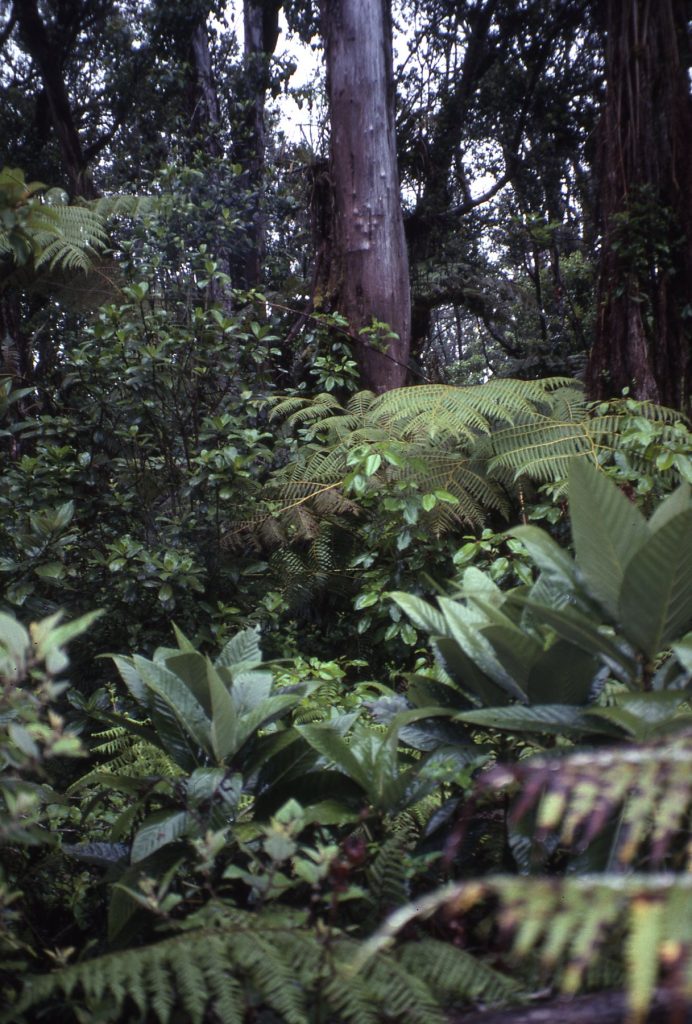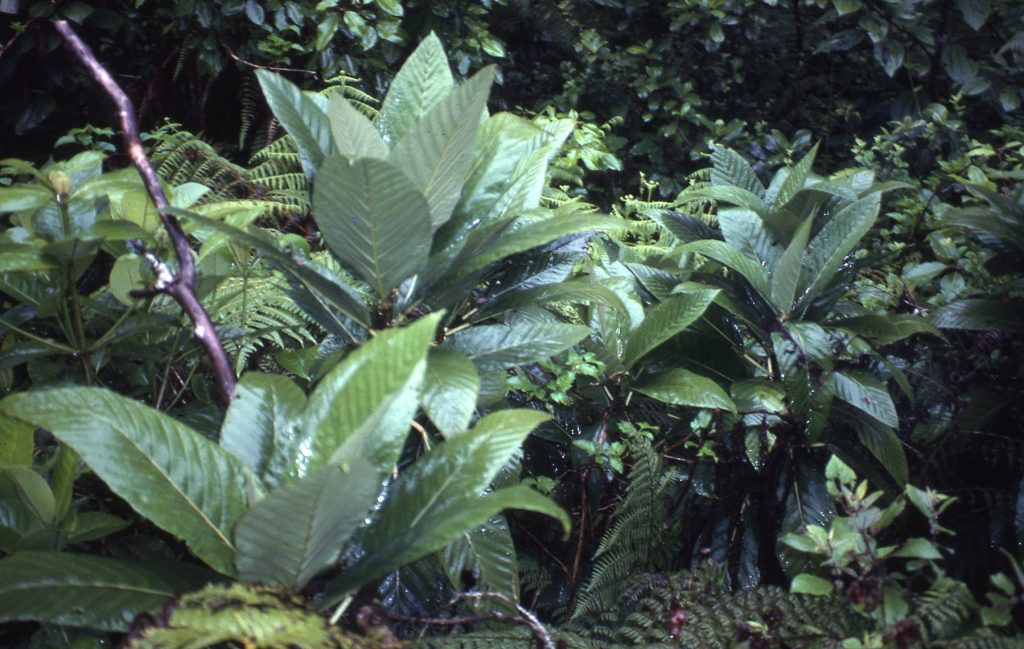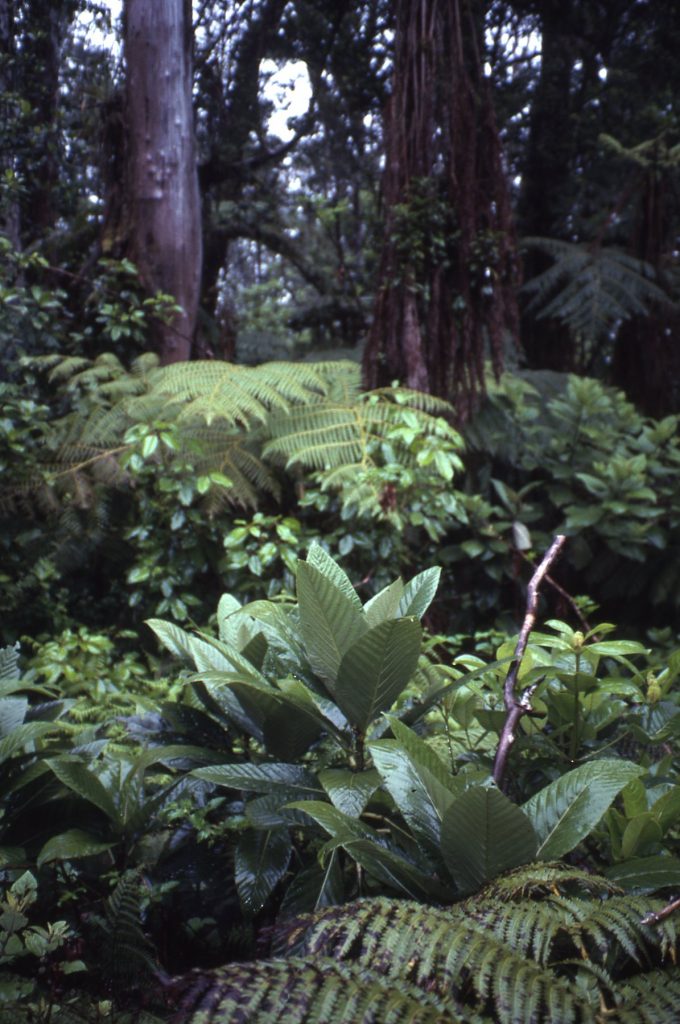Olonā
Names
- ʻŌlelo Hawaiʻi: Olonā
- Scientific: Touchardia latifolia
Conservation Status
- NatureServe Heritage Rank G3 – Vulnerable
Species Information
Olonā is endemic to Hawai’i and a part of the nettle family, Urticaceae. Typical to many Hawaiian plants, the olonā does not have stinging hairs like its mainland cousins. Olonā typically flowers between May and December, with female flowers becoming fleshy orange berry-like aceens and male flowers being white. Early Hawaiians used olonā for cordage, fish lines, netting , mending fish hook and octopus lure lashings, leather capes and helments, ki-leaf raincapes, weapons such as daggers and clubs, and with ‘ie’ie in twined basketry (“Olonā,” n.d.).
Distribution
Olonā is found on all the main Hawaiian islands except Kaho’olawe and Ni’ihau.
Habitat
Olonā grows in mesic valleys and wet forests 70 to 1,200 m (229 to 3937 ft) in elevation.
Threats
- Ramie moth
- Competition with alien invasive plants
- Trampling and browsing by feral ungulates
References & Additional Resources
“Olonā.” Bishop Museum – Ethnobotany Database, https://data.bishopmuseum.org/ethnobotanydb/ethnobotany.php?b=d&ID=olona.




